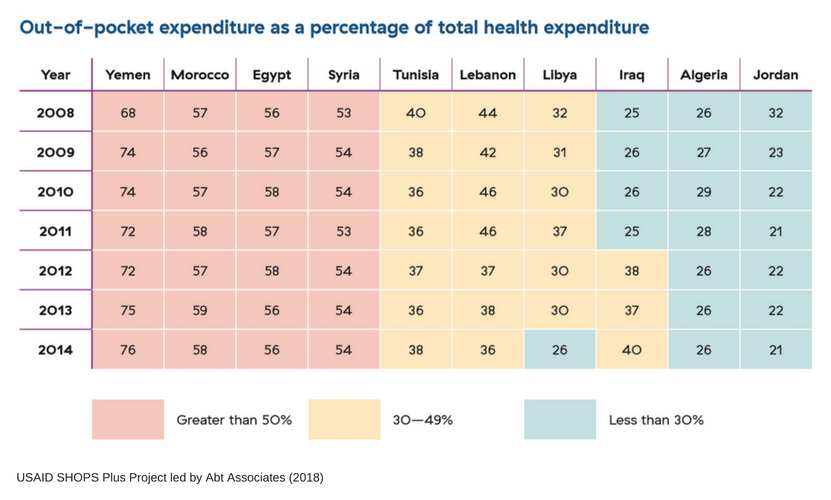Health Trends in the Middle East and North Africa
A Regional Overview of Health Financing and the Private Health Sector
In the past several decades, countries in the Middle East and North Africa have made significant improvements in developing their health systems and improving the health status of their populations. However, the region continues to face substantial and diverse political, economic, social, and health challenges: a rise in the burden of noncommunicable diseases, ongoing conflicts in several countries, and refugee crises. To inform future USAID health investments in the Middle East and North Africa, the Sustaining Health Outcomes through the Private Sector (SHOPS) Plus project and the Health Financing and Governance (HFG) project conducted an analysis of the private health sector and the health financing landscape from January 2017 to April 2018. The countries included in this analysis are Algeria, Egypt, Iraq, Jordan, Lebanon, Libya, Morocco, Syria, Tunisia, the West Bank and Gaza, and Yemen.
SHOPS Plus and HFG
